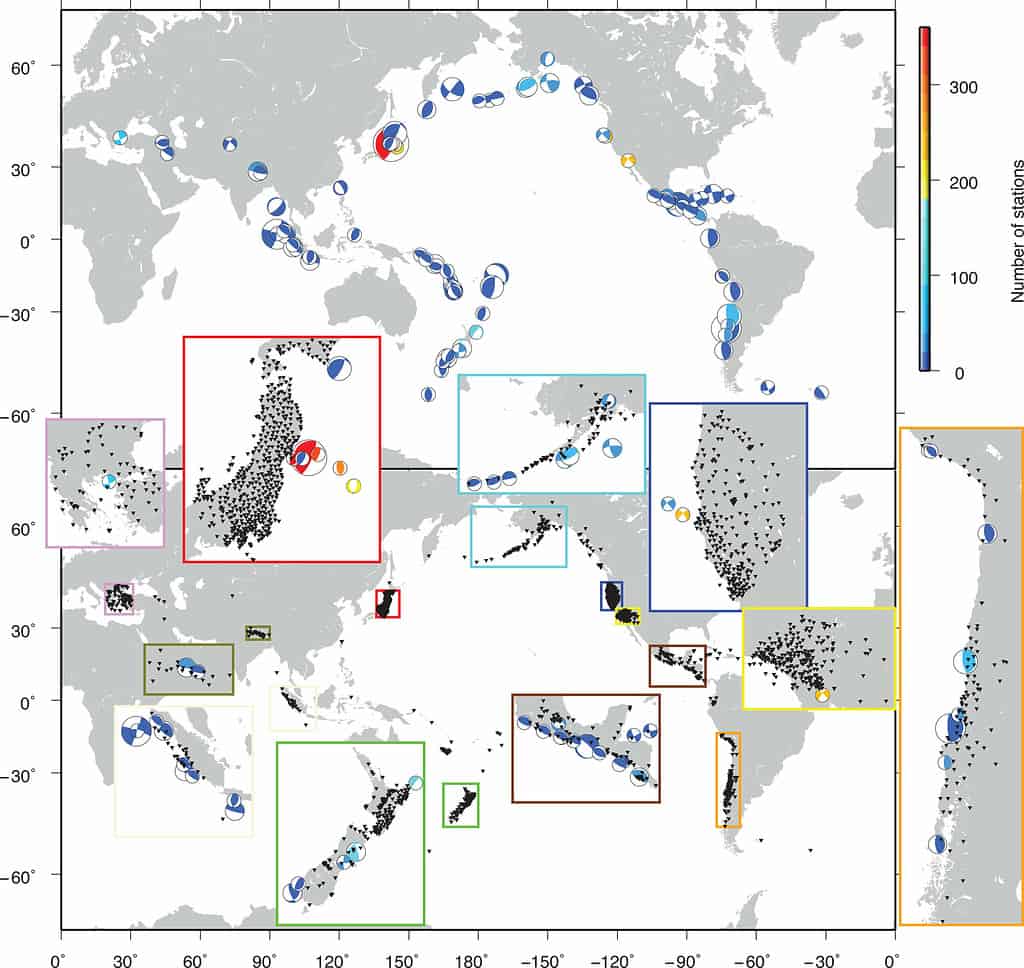
Earthquake warning systems can only offer a very brief window of notice, usually no more than two minutes, leaving little time for preparedness. However, recent research is providing a glimmer of hope for improved earthquake prediction.
Scientists have detected subtle shifts along fault zones up to two hours before major earthquakes. Although the current monitoring systems are not yet capable of real-time detection, this finding could lead to a future where residents may have a chance to seek safety ahead of the most devastating quakes.
Earthquakes occur when stress builds up between two locked blocks of the Earth’s crust along a fault, eventually leading to a sudden slip. Experts have debated whether this rupture happens instantaneously or begins gradually, with potential detectable signals. While precursor signs have been observed for individual quakes, this study aimed to find a signal applicable to all major earthquakes.
A GPS approach to earthquake detection
Researchers Quentin Bletery and Jean-Mathieu Nocquet from Côte d’Azur University in France compiled data from over 90 earthquakes with magnitudes larger than 7 that occurred in the past two decades. They focused on GPS station records near these quakes, which accurately capture land movement every 5 minutes with millimeter precision. The researchers analyzed more than 3,000 time series of motion in the 48 hours leading up to the main ruptures.
After stacking the time series data, the researchers noticed that, in the first 46 hours, the records showed no significant features. However, during the two hours immediately preceding the earthquakes, they noticed signs of increasing movement along the fault zones. Essentially, there’s a slip between tectonic plates causing the land above them to move in a measurable, horizontal direction.
Could this be just a coincidence? The probability of this increase happening just before the quake and being unrelated is extremely low, and the researchers confirmed this by analyzing 100,000 random time windows in non-earthquake GPS data. The pattern occurred only 0.03% of the time in non-earthquake seismic data, indicating that earthquakes possess predictable characteristics, though our current technology lacks the necessary resolution for precise geographic predictions.

While these findings may sound like earthquakes could someday be predicted much longer in advance than today, it may be wise to curb your enthusiasm. The patterns revealed by researchers, though certainly thought-provoking, could suffer from contamination in the GPS data from small foreshocks that often precede large quakes. Additionally, the specific and arbitrary timescale of 2 hours remains a puzzle, given the diverse behaviors of earthquakes. When something sounds too good to be true, it usually isn’t.
While the current precursor signal won’t be used for warnings anytime soon, the ShakeAlert earthquake early warning system for the U.S. West Coast is exploring the possibility of incorporating GPS data into its alerts, according to science reporter Paul Voosen. However, implementing this precursor signal requires further research and refinement.
More GPS stations, with higher sensitivity, would be needed to detect faint slippage signals on individual faults. But there’s a problem: many earthquake-prone regions lack adequate instrumentation, making it uncertain whether this pattern occurs consistently across all large earthquakes. Moreover, the most important limitation is that a pilot early warning system for earthquakes at a single site would have to use GPS sensors that are 100 times more precise than those in use today.
“We can’t detect at the scale of one earthquake, so we cannot make predictions,” Bletery told New Scientist. “But it tells us there’s something going on, and if we make significant progress in measurement – either the sensor itself, improving its sensitivity, or by just having more of them – we could be able to perceive things and make predictions.”
The findings appeared in the journal Science.









